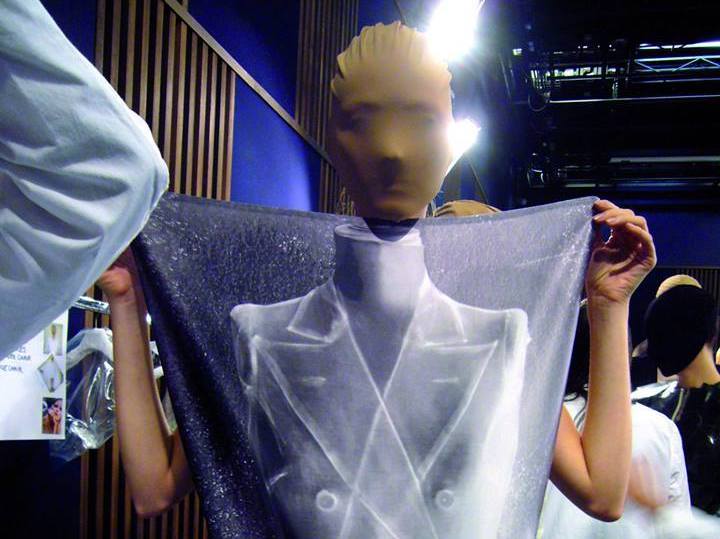
The Ultimate Guide: Maison Martin Margiela
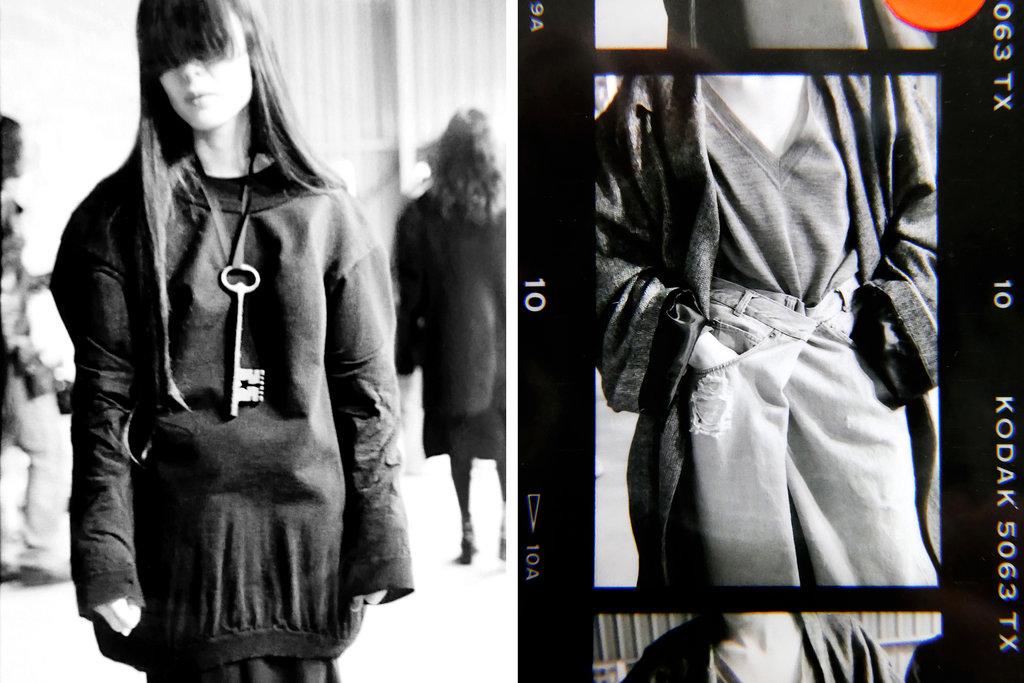
In 2008, an article about Martin Margiela of T Magazine writes, “ “Even after 20 years in the business, Martin Margiela is still the most elusive figure in fashion, which might explain why designers feel so free to thumb through his archives for inspiration.”
When fashion critic Suzy Menkes famously reviewed Marc Jacobs’ spring show then, she criticized Jacobs for copying Martin Margiela. In response to this, Jacobs says, “Everyone is influenced by Comme des Garçons and by Martin Margiela. Anybody who’s aware of what life is in a contemporary world is influenced by those designers.”
In the end of the 20th century, they had been attempting to disprove the elitism and fetishism in fashion for about three decades. Yet, people are still living under the influence of Martin Margiela.
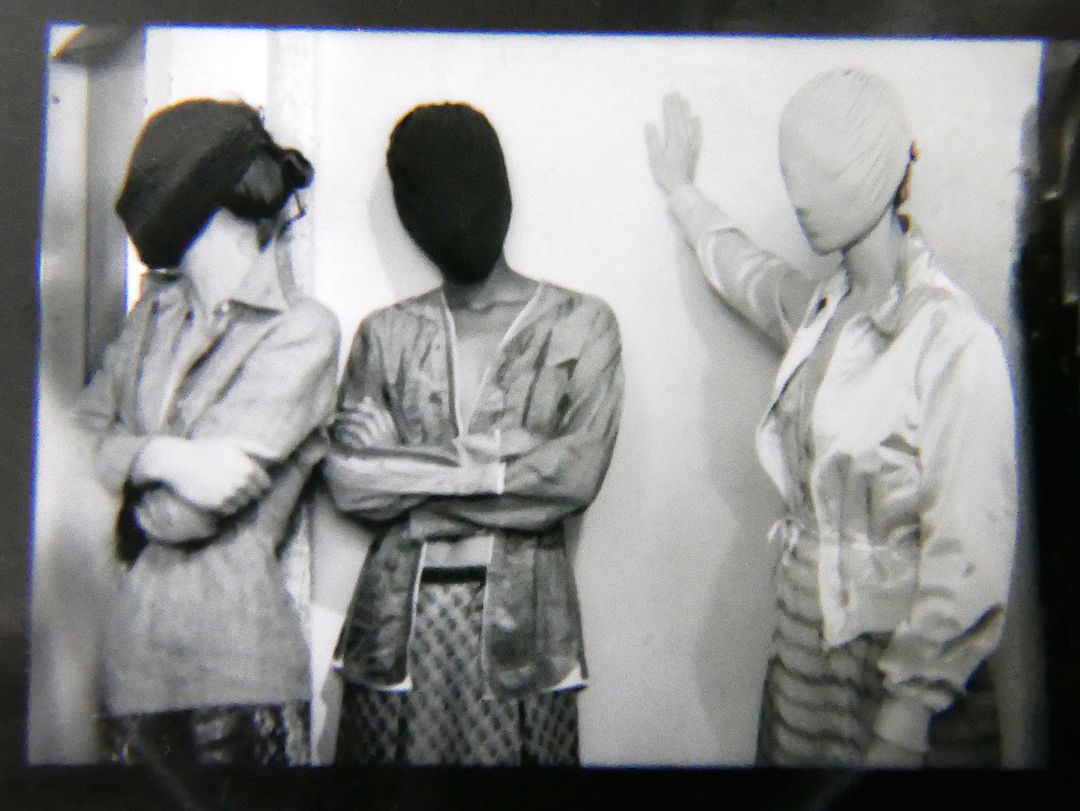
Maison Martin Margiela 1996 S/S
1. Too Late To Meet Him.
.
“You’re too young. You heaven’t felt such novelty on your skin; the adrenaline hasn’t yet coursed through your veins. I miss it, it’s hard, really hard…. I’m talking about a conceptual and aesthetic shock. It was more a concept than a collection, or more a grouping of ideas – a method. This writing of fashion stuck with me. It allowed me to be myself without being in disguise.” – Linda Loppa
(ps. Linda Loppa, Director of Polimoda International Institute of Fashion Design & Marketing. Prior to this she was the head of the fashion department at the Royal Academy of Fine Arts in Antwerp (1982-2007), her alma mater as well as that of the “Antwerp Six”. She took the position in 1982, and it is worth mentioning that she once declared in a statement that “I never taught Martin Margiela.”)
2. Martin Margiela.
.
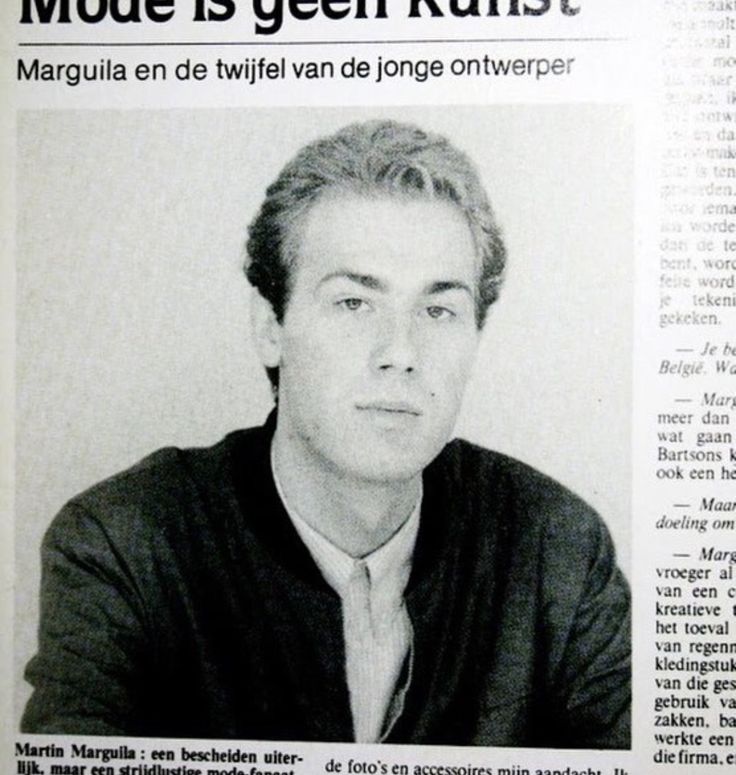
Martin Margiela is elusive. He was born in 1957, in Limbourg, a city in Belgium. At the age of 18, he moved to Antwerp for the studies at the Royal Academy of Fine Arts where he graduated in 1980; in three years, he participated in Canette d’or, the contest that opened up many opportunities for him and led him to become an assistant to Jean Paul Gaultier.
In a rare interview with Sphere in 1983 prints on 6+ Antwerp Fashion (2007), Martin Margiela talked about his first fashion experience. “I was watching the TV news and there was an item about (Paco) Rabanne and (André) Courrèges. As soon as I saw their designs I thought, ‘how wonderful, people are doing the sort of thing I want to do’.”
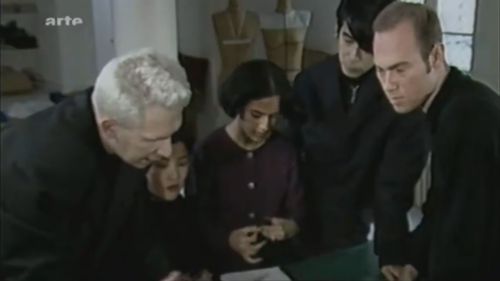
In an interview with the New York Times, Gaultier hired Margiela as a design assistant. “I didn’t need a design assistant,” Gaultier said. “And he said, “I don’t care, I’ll be your secretarial assistant.” He became in charge of the commercial collection. I could see his strength. And I said, what are you doing here, you could do something incredible.”
“You can imagine, if you don’t know anything about him, that he is this antisocial, cold person, but he is not that way at all,” said Stella Ishii, the owner of The News showroom in Manhattan, which distributed his collections in the United States for many years. “He is a very warm and sensitive person.” In fact, many buyers and editors have seen and come across Margiela. Until 1994, he vanished from the public spotlight. Ishii recalls that Margiela exerted so much passion and wittiness, even showing his crafty techniques, to explain his collections at the showroom. At backstage, he was thoroughly involved in every modeling.
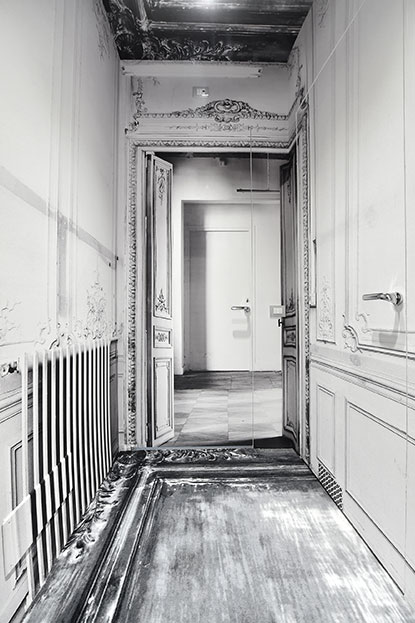
Maison Martin Margiela Office
3. Why disappear ?
.
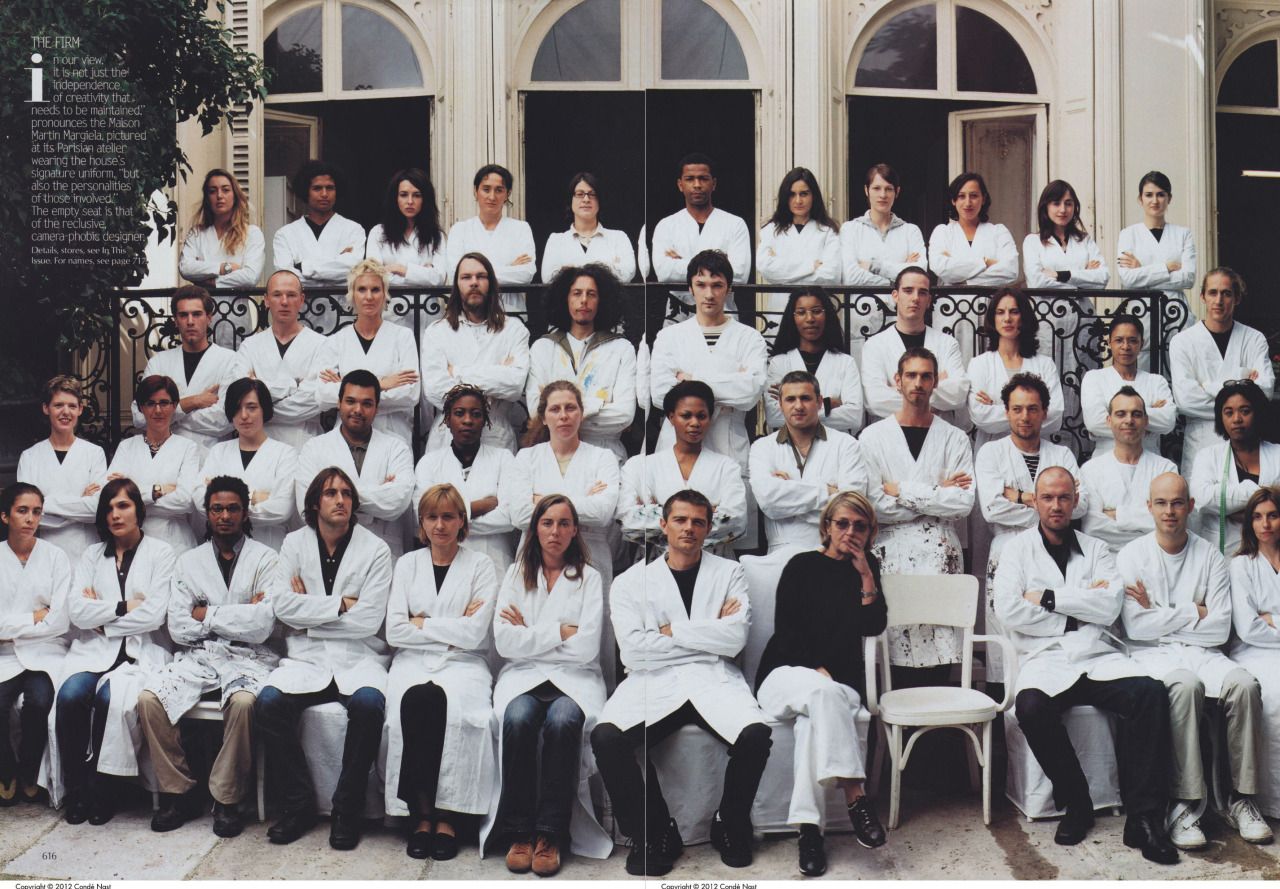
A portrait of Martin Margiela, US Vogue, 2001, Annie Leibovitz.
Many in the fashion industry respect his reclusive mentality, just as the editor of MASTERMIND Magazine asked the director of the documentary We Margiela (which was still shooting at the time) if she could be interviewed, her answer was “Silence is contagious.”
“The fashion industry is built on myths,” says Alistair O’Neill, head of the fashion history department at Central Saint Martin’s in London, in an interview with Icon Magazine. “The respect that fashion journalists have for Margiela and his personal identity is held in them wanting to believe in and perpetuate the myth and allure of a mysterious creative.”
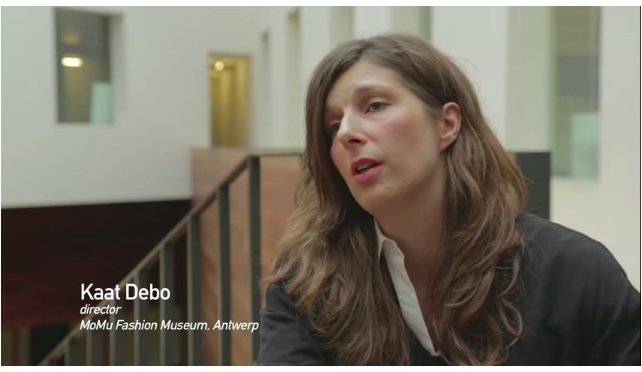 Kaat Debo, director of Antwerp’s MoMu once concluded, there is only one person that has the power to reveal the real Martin Margiela, “If there will be a moment in the future when Martin Margiela decides to step out of the shadow, it will be him that decides.”
Kaat Debo, director of Antwerp’s MoMu once concluded, there is only one person that has the power to reveal the real Martin Margiela, “If there will be a moment in the future when Martin Margiela decides to step out of the shadow, it will be him that decides.”
AnOther editor-in-chief Susannah Frankel wrote about this when she worked at The Independent, “It is said, in fashion circles, that Margiela’s refusal to engage with the press is due at least in part to his experience of the havoc the wrong kind of publicity – or even just overexposure – can wreak on a designer, and specifically the experience of Gaultier, who was later to tell journalists that he was overlooked for the job at Christian Dior following Gianfranco Ferré’s retirement because of his less-than-haute role as the kilt-and-Breton-T-shirt-wearing presenter of Eurotrash.”
4. The White Label
.
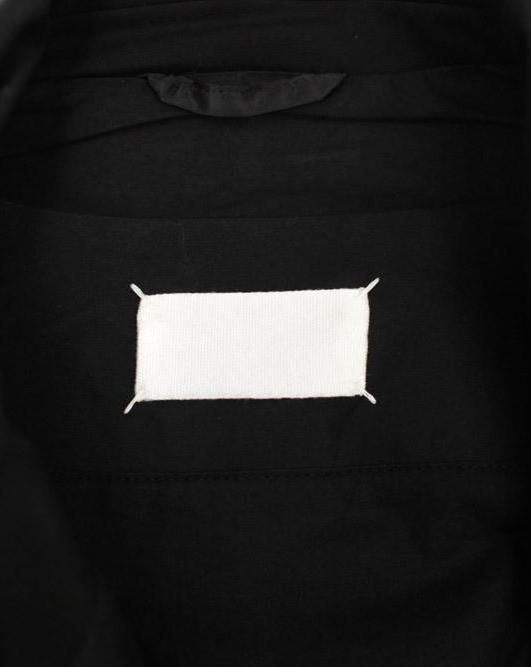
“When we first started out in 1988, it was the biggest moment for labels.” Martin Margiela explains, “I want people who don’t know who made one of my garments to first say this is nice, then the salesperson can tell them who made it. If you see something in the cloakroom in a restaurant, then you will never know who it’s by, but I don’t care.” [Time Magazine, October 9, 1995.]

Axel Keller
According to the interview with salesperson (Brand Commerce Director) Axel Keller in the documentary We Margiela, “The fact that we had a white label was strongly connected to the fact that Martin did not want to do interviews. If you don’t want to show your face, and you don’t want to speak with the people, why would you put your name on the label ?”
“And the stitches showing on the back were a technical decision. They were always on the first layer of fabrics, so not necessarily on the outside. If for example, a jacket had a lining, the stitches would be in the lining, so not visible on the outside. I remember that we had discussions with clients, who said ‘Yes but why is it there ?’ and Martin said, ‘But how do you want us to fix it otherwise? We can’t… it’s a t-shirt. There’s just one layer of fabric, so the stitches will show on the outside. They were complaining about it. And then, later on, everybody wanted to have it on the outside, and we said no, it has stitches on the fabric of the lining. We don’t need it to be on the back like a signature.”
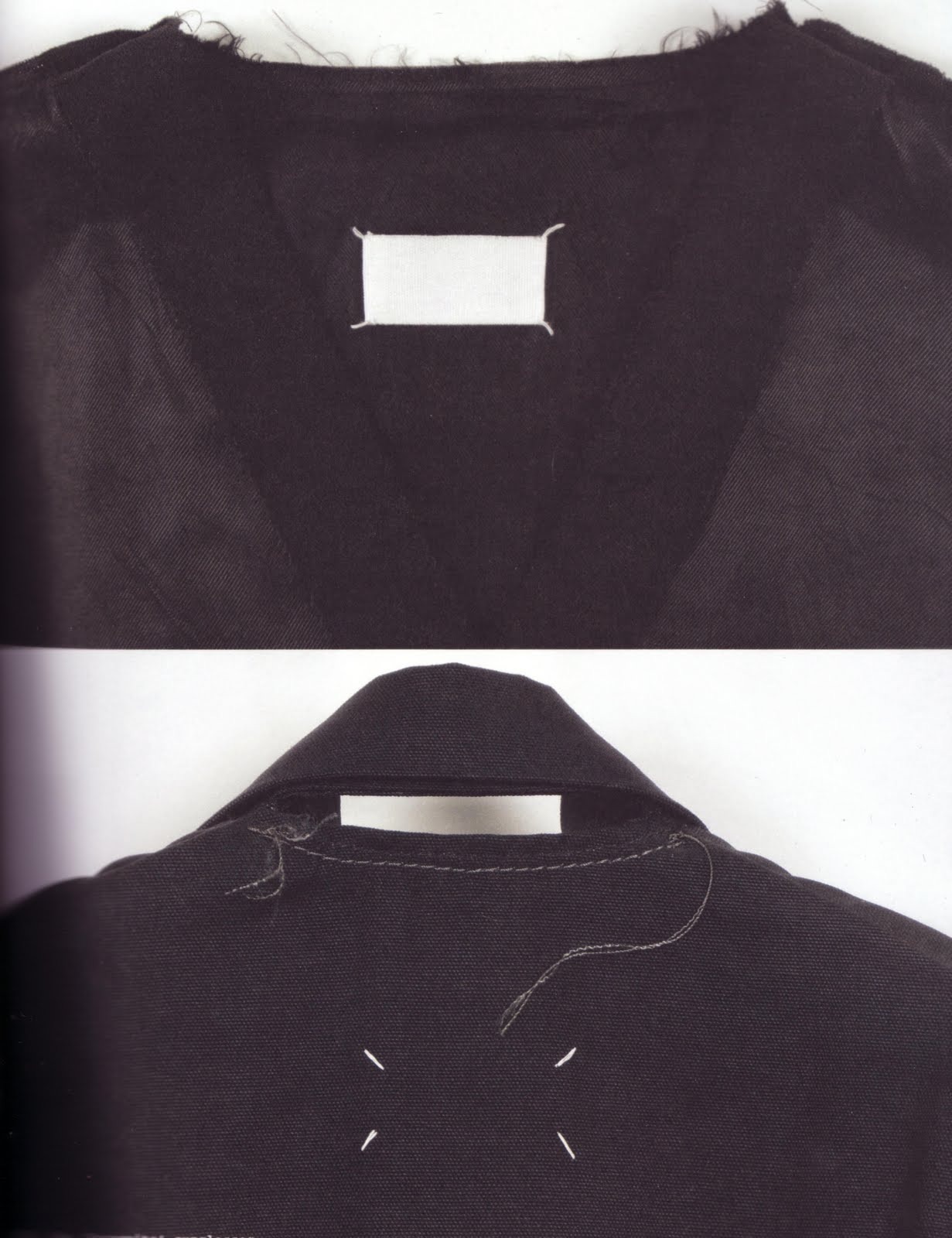
5. Deconstruction.
.
According to New York Times, when French philosopher Jacques Derrida coined the term “deconstruction” in the mid-20th century, “It was a backlash against staid literary analysis, arguing that no work can have a fixed meaning, based on the complexity of language and usage.” While The Oxford English Dictionary defines deconstruction as “the action of undoing the construction of a thing.” So not only does that mean that jacket linings, for example, can be on the outside or sleeves detached, but the function of the piece itself is reimagined.
.
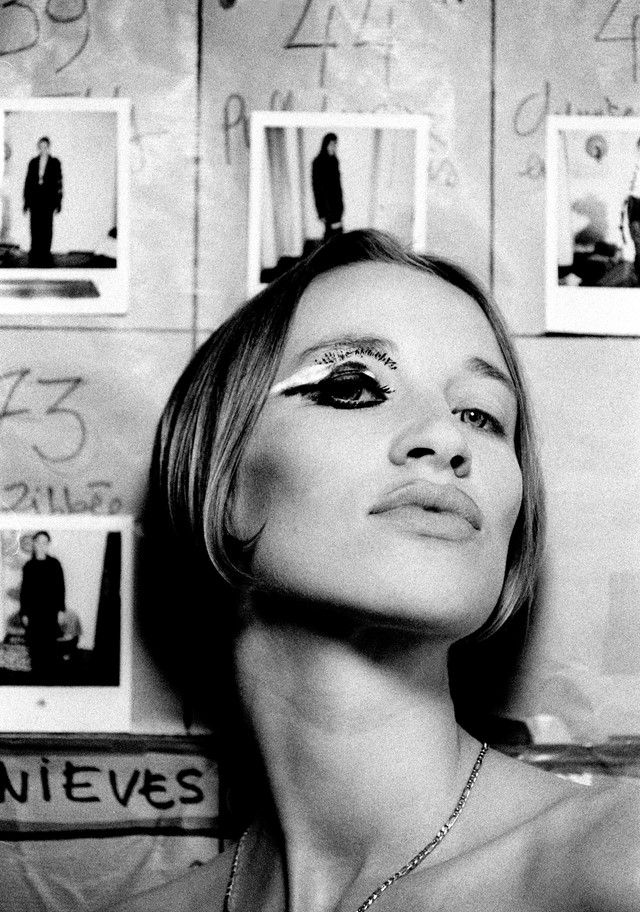
Kristina de Coninck
“For him, beauty doesn’t lie in perfection, but in what moves you.”— Kristina de Coninck
Many said fashion scholar Alison Gill was the first to describe Martin Margiela’s garments as “Deconstruction Fashion”, though to be accurate it was Bill Cunningham, the pioneer of street photography, who first offered “deconstructionism” to the fashion world. Thereafter the fashion circle was galvanised and began using the term “deconstructionist” in every commentary on Martin Margiela and his contemporary counterparts. The term was seen as a rebellion against the luxury, fashion reporters noticed the designers were angry with the mainstream values pervasive in the 80’s, it was too driven by money and there was too little imagination. Martin Margiela said before founding the brand,
“I hope I’m aiming at them, the people without too much money. It’s not easy to be successful at the moment because of the economic climate but then fashion is at its most creative during times of crisis.” — Martin Margiela(Sphere, 1983)
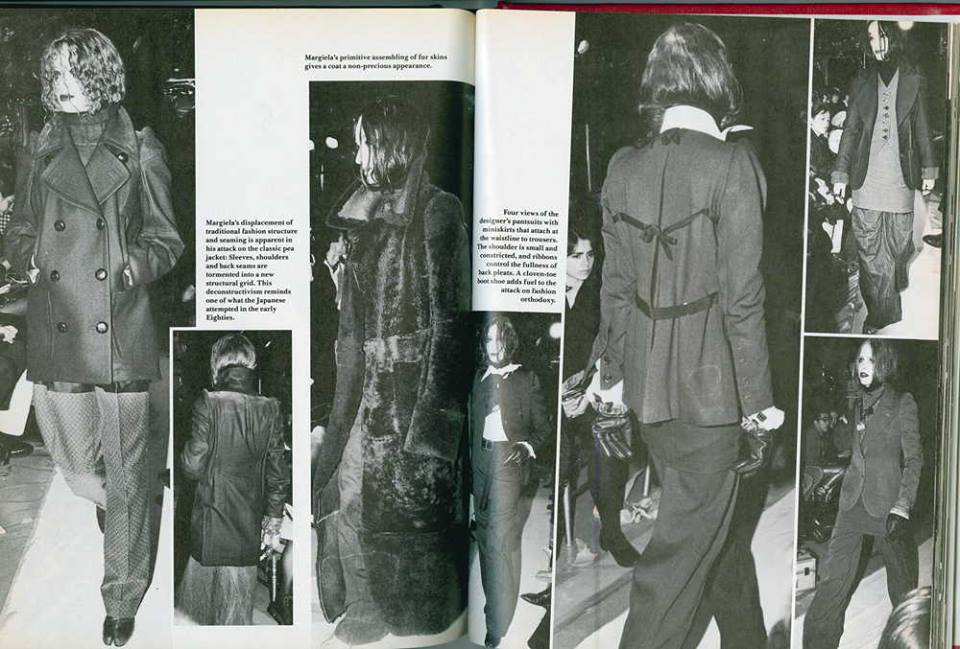
Bill Cunningham wrote in Details magazine in September 1989, “Martin Margiela, formerly a Gaultier assistant, in this, his second collection on his own, provided quite a different vision of fashion for the 1990s: a beatnik, Existentialist revival … The construction of the clothes suggests a deconstructivist movement, where the structure of the design appears under attack, displacing seams, tormenting the surface with incisions. All suggest a fashion of elegant decay.”
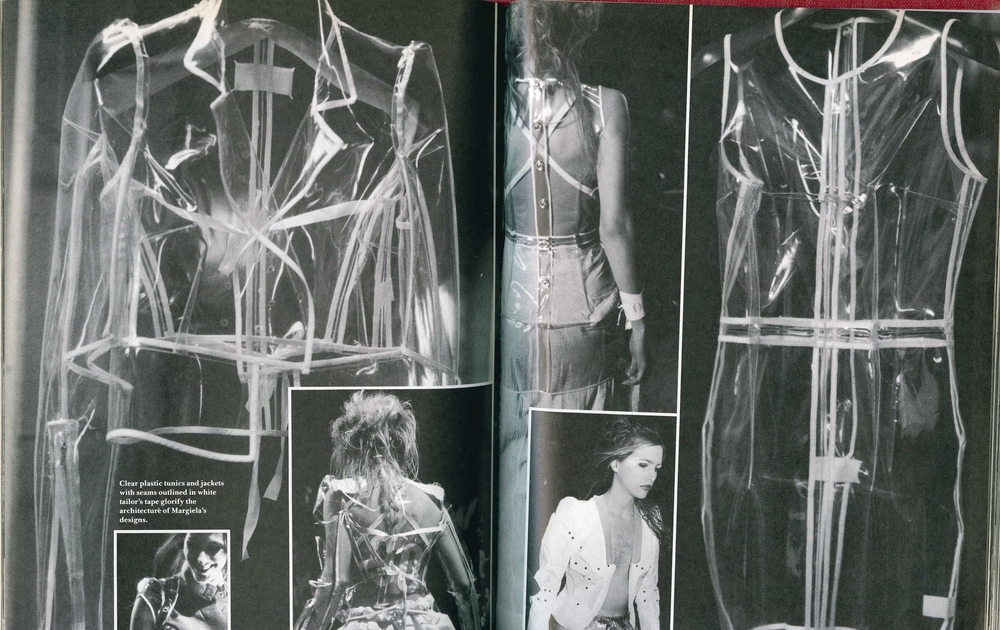
Spring/Summer 1990, Maison Martin Margiela’s third collection, this collection defined “deconstruction” and DIY. It was a collection that no longer strived for glamour; young people living in the countryside immersed in the countryside traditions, they were unconstrained, frolicking and laughing. It was this show that moved Raf Simons to enter the fashion world.
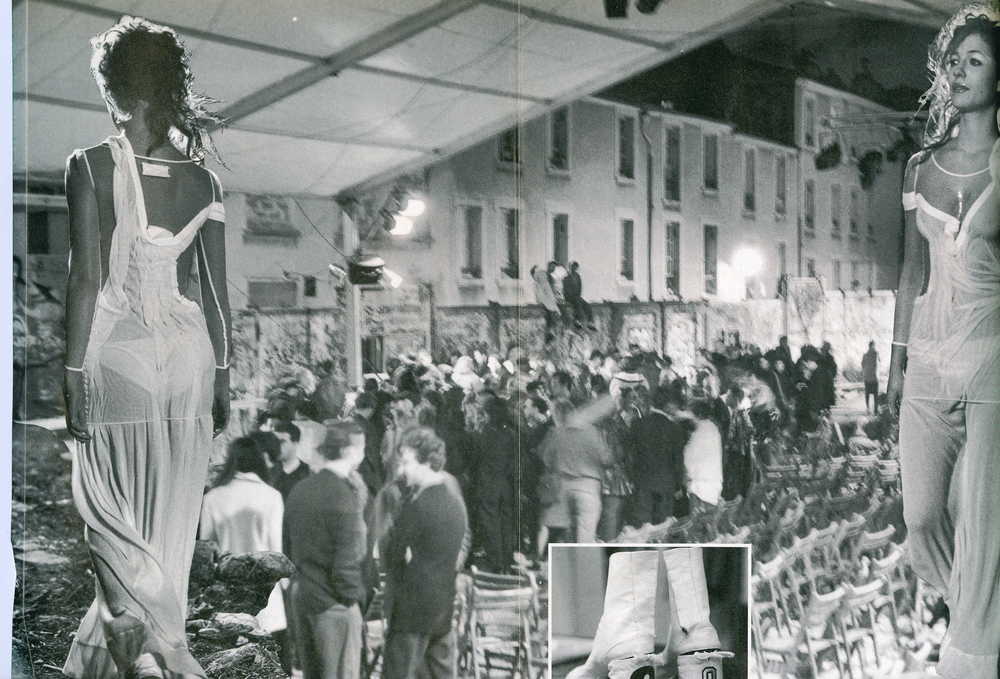

photo via fashionprojects.
6. It’s Garments, Not Clothes.
.
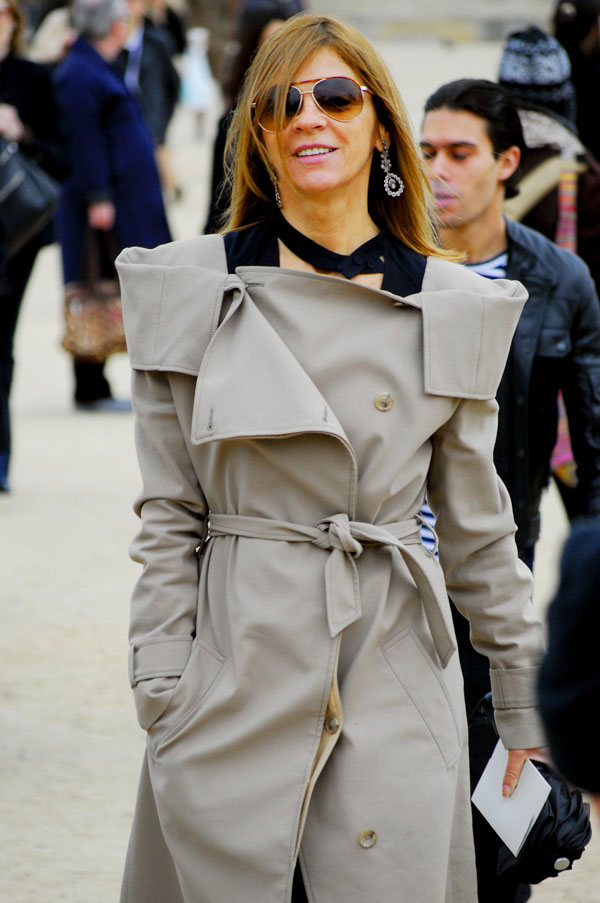
Carine Roitfeld in Maison Martin Margiela Trench Coat 2008 F/W
“We can consider his enduring position as an avant-garde designer, how he’s always been miles ahead of the rest, this artist of incredible. Beyond words beyond explanations, what remains most important with Martin Margiela are the clothes themselves, in their totality — radical works that are classic yet progressive, in which one feels neither disguised, ridiculous or out of place. And if he himself is a mystery, his clothes remain the best proof that he exists. His work — experimental and honest, audacious and sincere — never cheats the wearer, something which is rare in the fashion world!” — Carine Roitfeld
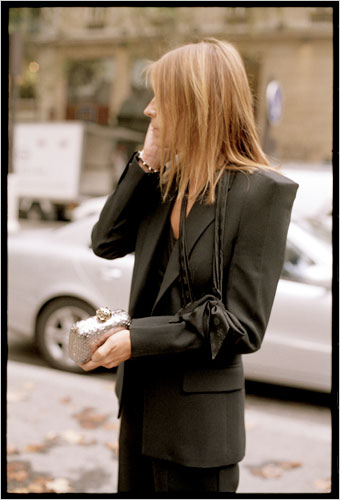
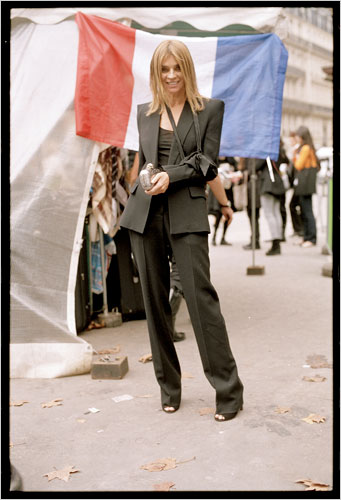
The Maison Martin Margiela team responded in an interview with HYPEBEAST Magazine Issue 2, “From the Maison’s point of view, garment is an ‘accessory’ for the body, with no intention of hiding of disguising it… a beautiful accessory that we have to decorate our body with.”
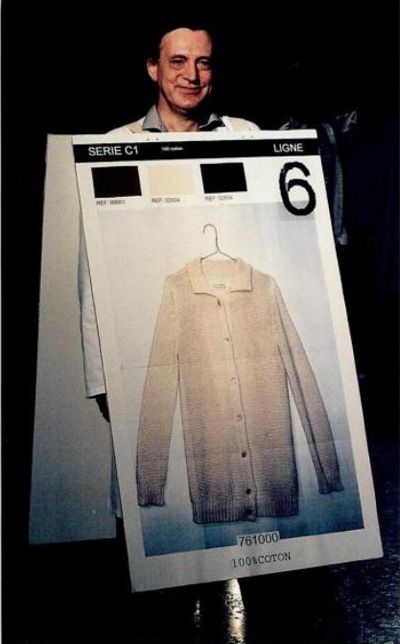
Maison Martin Margiela 1999 S/S
Fashion editor Arnaud Sagnard wrote on Mastermind magazine, “One word keeps coming back, the one I have heard the most since the beginning of my investigation:‘Garments.’ Here, no one talks about ‘clothes.’ It is ablout the ‘piece’ that is ‘created’ , not the ‘apparel’ that is ‘bought.’ Each person I speak to shares their memories and tries to decode the phenomenon. The English fashion critic Suzy Menkes gets straight to the point, noting Margiela’s ‘exceptional artistry in cutting,’ while the French fashion historian and curator Olivier Saillard sees him as a revolutionary. ‘He didn’t just introduce new clothes,’ Saillard tells me. ‘He also provided comment on a fashion system that was already very largely dominated by money… He completely turned fashion history around in his favor.’”
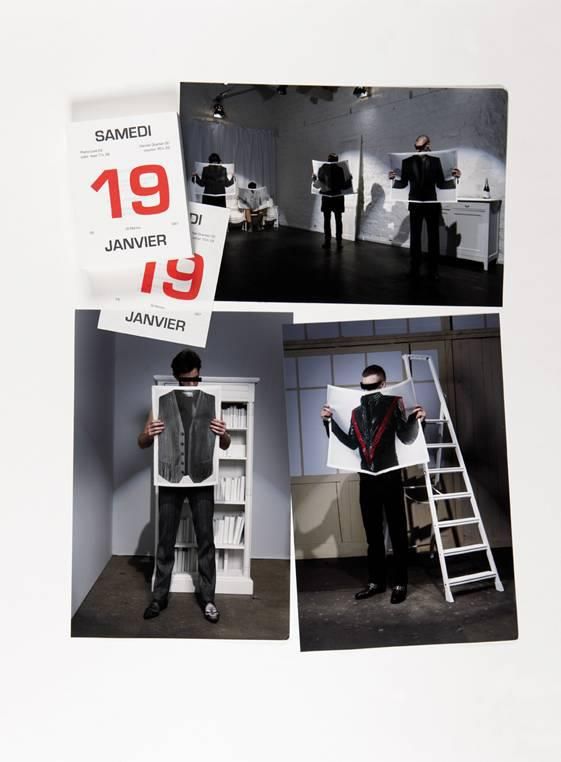
Maison Martin Margiela Menswear 2008 F/W
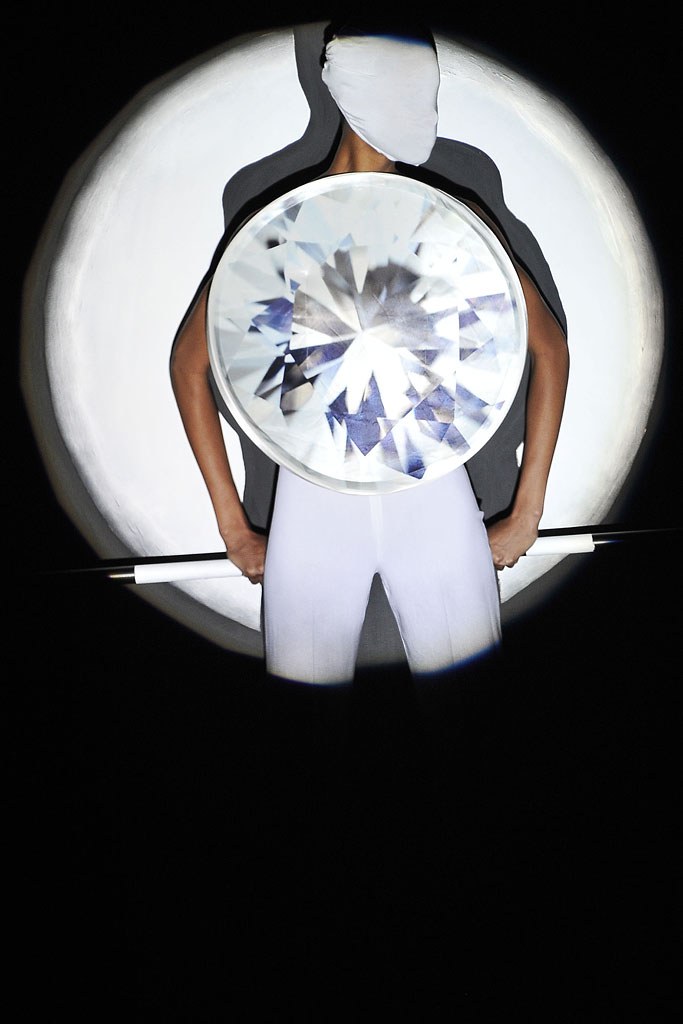
Maison Martin Margiela 2009 S/S
7. There is no I, Only US.
.
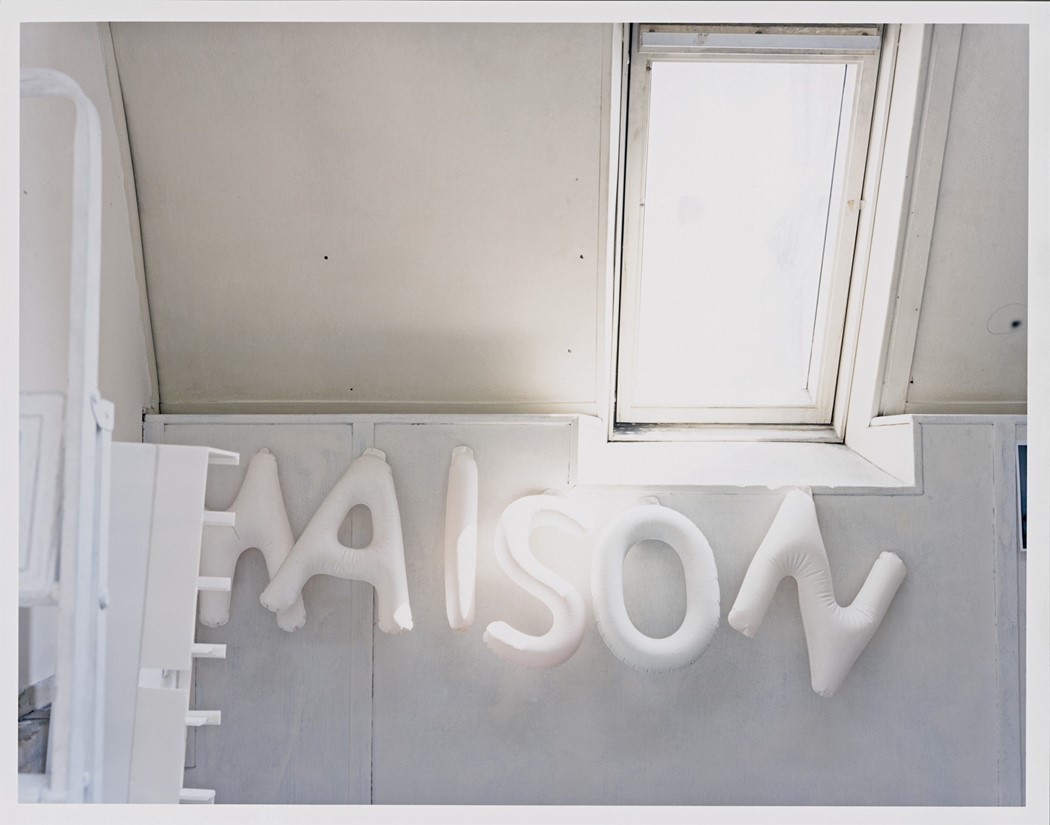
“There was no strategy behind it as such. We only wanted to have more democracy. We wanted everyone to experience fashion in the same way.” – Jenny Meirens
“With democracy, it was not only about the way the clothes were shown, but I think really in the way that the whole company worked,” said Jenny Meirens in an interview with 1 granary. “The people who were working in the different departments had more to say in every decision. The people we brought in to work in the studio as stagières [interns] would become head of commercial affairs after a few years. There was this very human approach on all levels.”
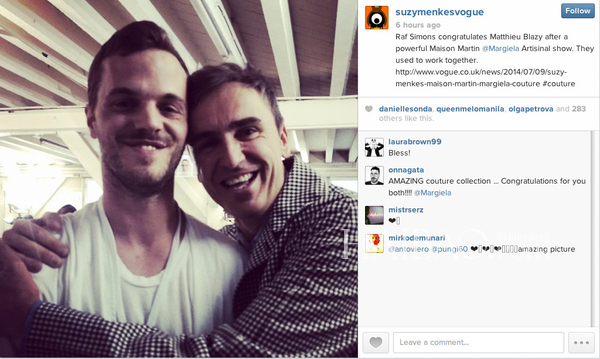
This changed in 2014, when the chief designer at the time Matthieu Blazy was praised as “a new star born” by Suzy Menkes.
Renowned fashion site The Fashion Law believes, “the interesting thing is the huge amount of emails from the brand, imploring the media to withdraw all related articles.” The masion tries to insist, “In light of the recent rumours regarding individual members of our design team, we ask you to remember that the long-standing communication policy of the Maison has not changed and that MMM does not communicate on any individual member of its collective, as our work is done by a team and is credited only to this same collective. This is our official spokespeople policy, and it remains our only comment on this subject.”
https://www.instagram.com/p/30vTtdS5Cp/
After that, John Galliano took the helm and the identity of we seemed to have lapsed. Though at Vogue’s Forces of Fashion conference in 2017, John said, “I adopted [the blouse blanche] out of great respect for Maison Margiela. It’s a great thing to wear. Everyone wears white coats, so, when we have visitors, everyone’s super nice to everyone because they’re not quite sure if they’re [talking to] the CEO. You know, democratic values.”
8. The Idea Surpasses The Means.
.
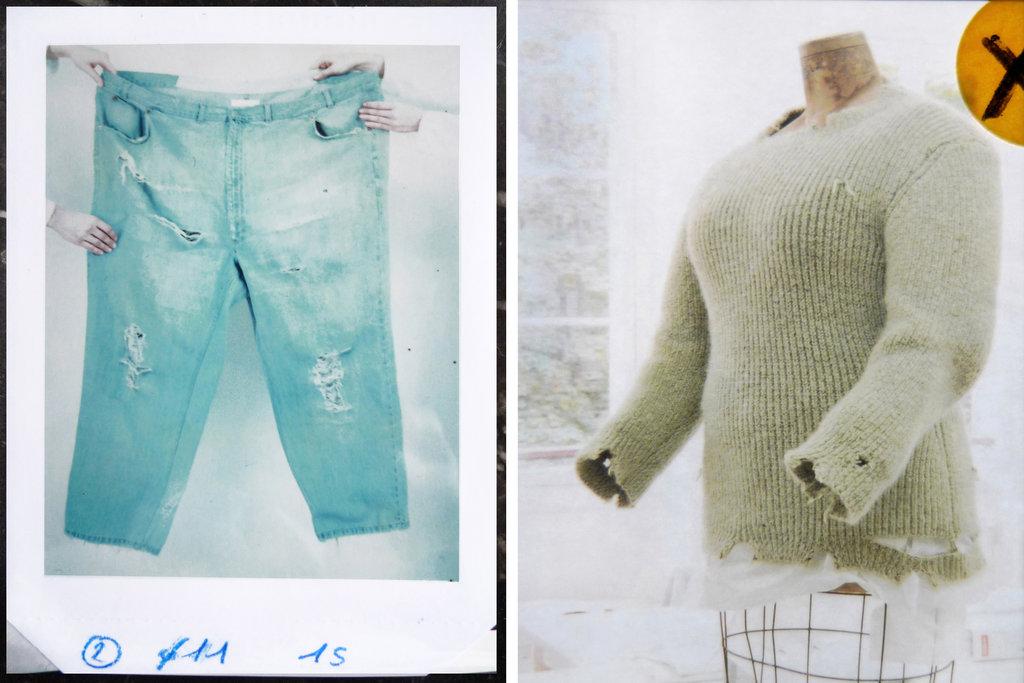
“It remains more important for us that someone finds their way of dressing as opposed to a way of dressing as prescribed by anyone else or by overriding trends,” — Maison Martin Margiela
Fashion terms have inundated the past and present. When words such as “luxury” and “minimalist” seem ever more meaningless, Maison Martin Margiela ignited conceptual fashion – its inaugural show in 1988 caused strange reverberations. Martin Margiela said in a report in 1993, “The brand has only been founded for a year, we want a concept, it is a big word, but when you look back in five years, we would use this word to call it.”
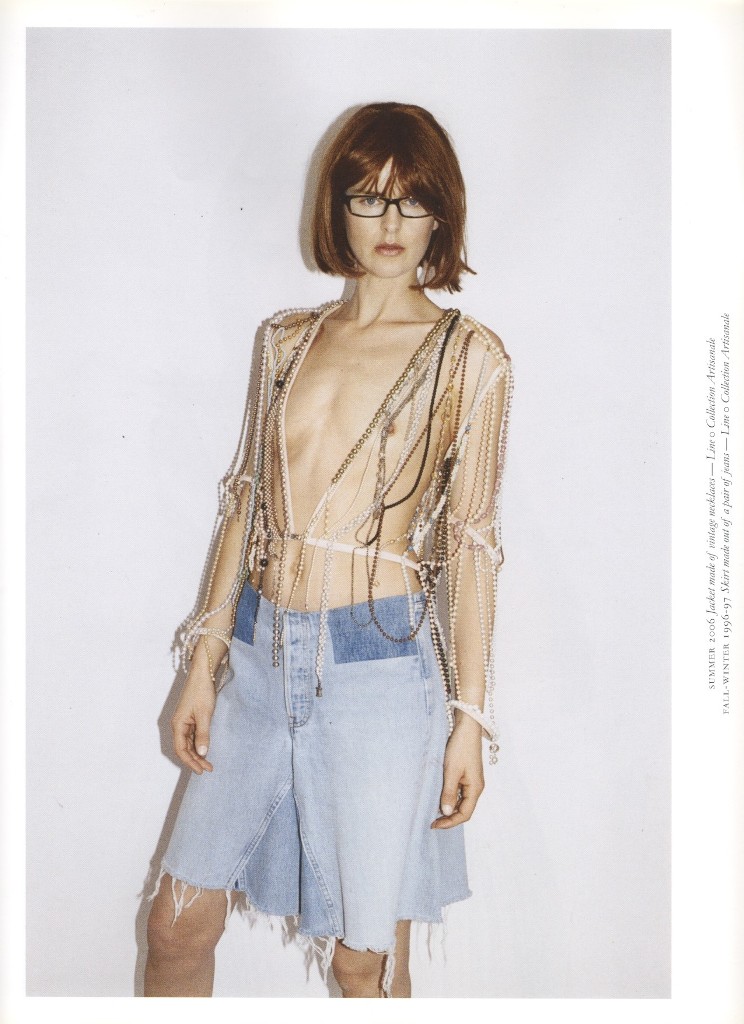
Maison Martin Margiela Purple Fashion Magazine Summer 2007
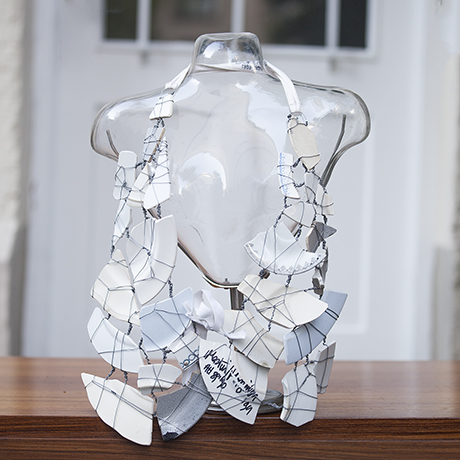
Maison Martin Margiela 1989 F/W

Maison Martin Margiela 1990 S/S
In the mid 90’s, conceptual fashion meant that garments were driven by a concept: conceptuality replaces practicality. Paris-based fashion historian Olivier Saillard asserted, “Margiela belongs to a few countercultural, creative artists like Jean Dubuffet or Robert Filliou. To them, the action is more important than the thinking; the thoughts are more important than the process. This is one of the most reliable ways to avoid becoming a victim of the capricious industry.”
“Our fashion was probably intellectual sometimes and we hope it was always intelligent. If some designers’ will is to be labelled intellectual it’s probably to give their work a more ‘respectable’ aspect, to bring it closer to art and as far as possible from its original purpose, that is to put clothes on people’s bodies. Like a lot of things, when you try too hard, then it’s definitely ‘out of it’ and you have missed what you were aiming at. A dress that tries too hard to be intellectual and/or intelligent will automatically become ridiculous.” — Martin Martin Margiela
9. Behind the fax machine, Patrick Scallon
.
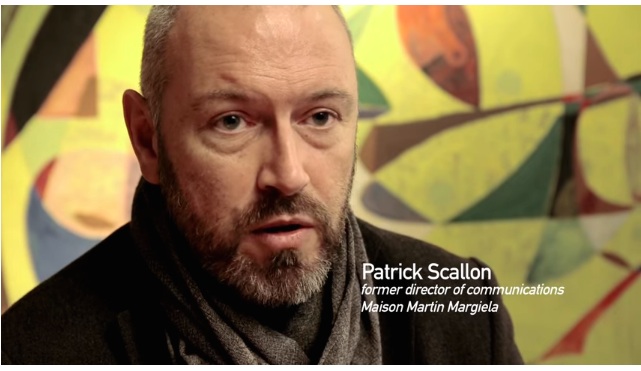
Patrick Scallon
Patrick Scallon and Jenny Meirens met at a wedding in Brussels in 1993, this was the beginning of his relationship with MMM. Then, in February 1994, he received a call to see if he could help with sales, they needed someone who could speak English.
In an afternoon in the 18th arrondissement in Paris, he had a meeting with a group of very stressed and paled face people, they all wore white blouses, in a white room, sitting around a white table, commanded by Jenny, with military precision.
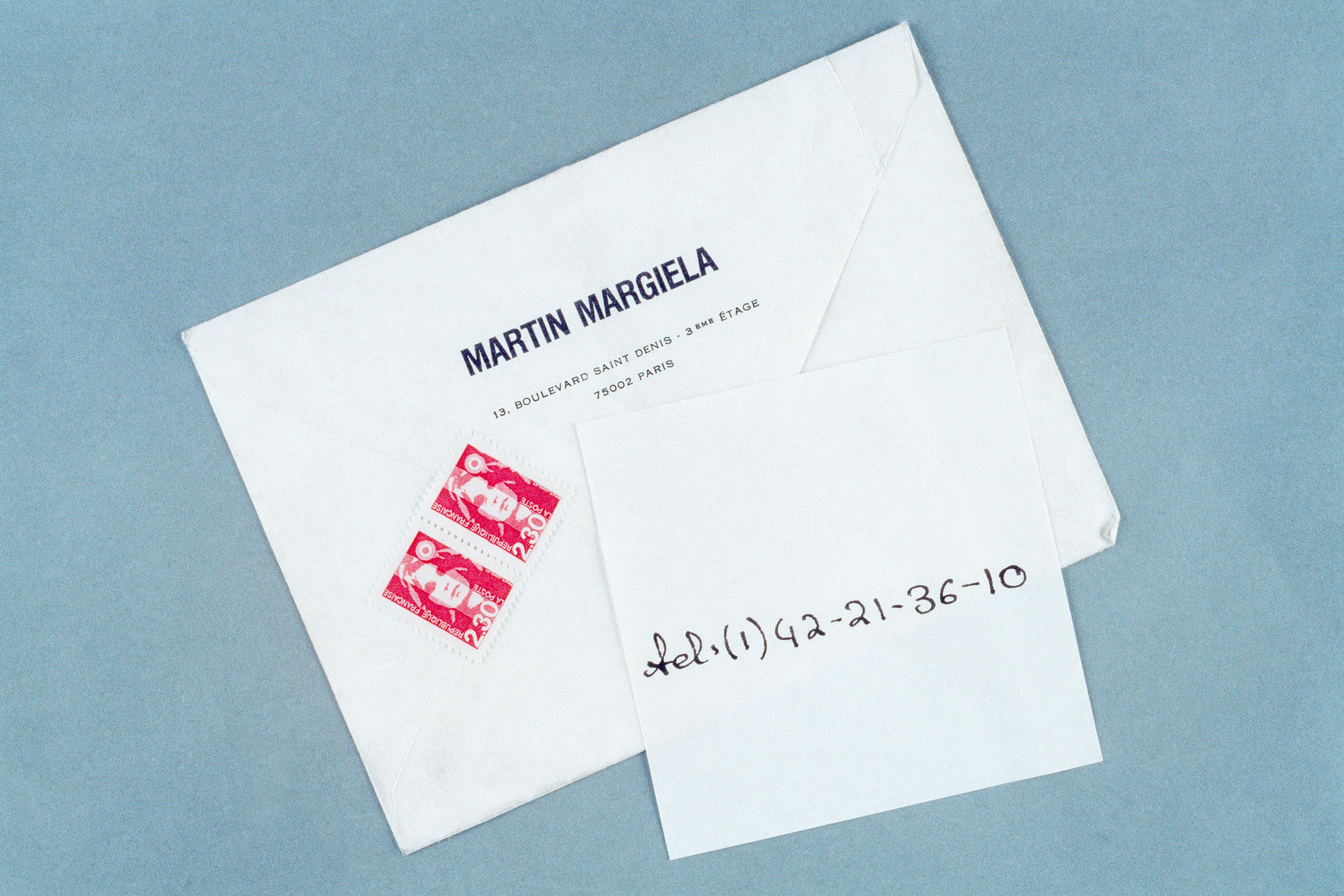
Maison Martin Margiela 1994 S/S invitation
Patrick Scallon told We Margiela, “Often what I say about that period is that it was a period where the provokers could provoke the people who wanted to be provoked. There was a relationship and people enjoyed the game of the provocation. For example, Jenny ‘s best invitation was a card with a telephone number. So, You got a white card with a telephone number, you phone that number, there was an answering machine, you took the address down, and you showed up to the show. People enjoyed that ten. Now, journalists don’t phone up, it’s an assistant who phones up, and they want to know what eat they’re on and the whole thing. And that’s the other thing, whether you’re Rei Kawakubo or the editor of Vogue, you sat where you were seated. Or where you could get a seat. So in a certain way, people enjoyed that provocation.”
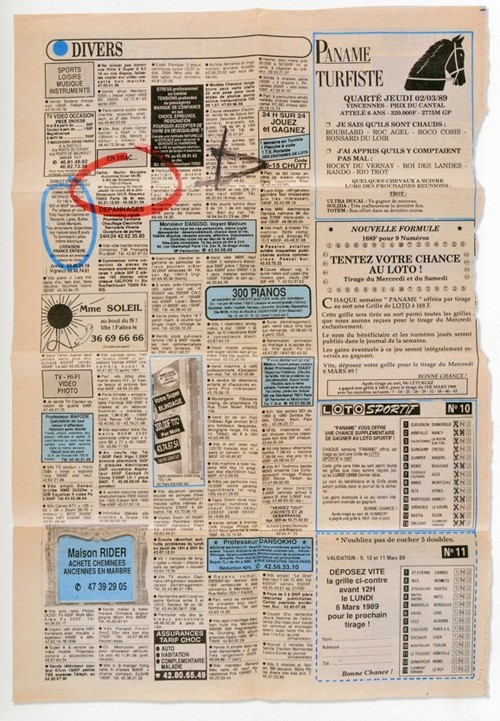
Fall/Winter 1989, Jenny Meirens advised on free newspaper the fashion show’s time and venue, when the paper was published, the team took hundreds of the newspaper, circled the Margiela ad and mailed them off, this was the cheapest invites in history.
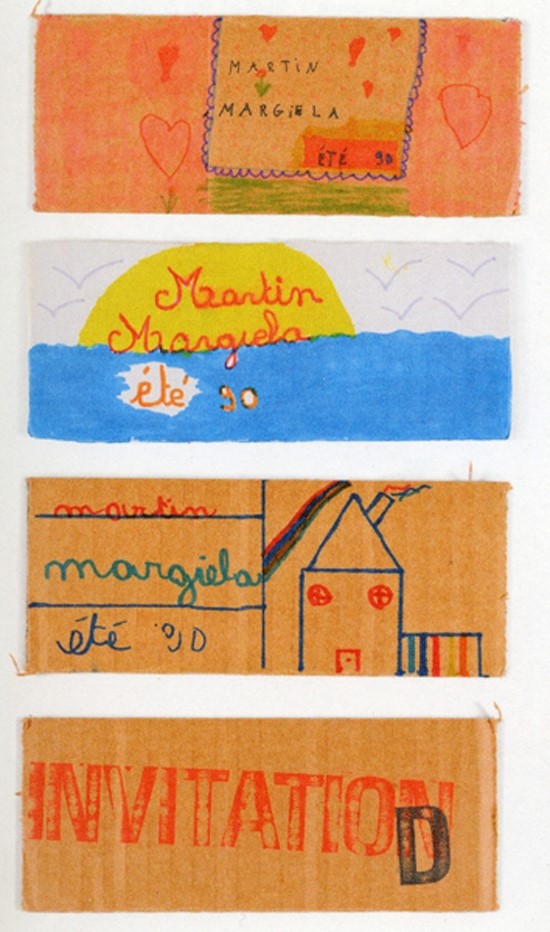
“Martin hated pretty printed invitations with calligraphy. Since we were staging the show on a kids’ playground, we thought it would be an idea to have the invitations drawn by kids, so it was like they were inviting you to their place. The next thing, then, was where do we find 500 kids to draw all these invitations? So we cut rectangular pieces of cardboard, gave them to the local schools, and in their art classes they were given the theme of a fashion show, and they drew their interpretations.” – MMM Publicist (1989-1992) Pierre Rougier(via Business of Fashion)
10. Martin, exit
.
According to photographer Marina Faust, a longtime collaborator and good friend of Martin, Martin did not renew his contract with the group in 2008 and the group decided not to publicise this news. In 2009 WWD wrote, “he poured creative energies into painting and wished to walk away from the fashion business.”
“In the end, he had said everything he wanted to, and I was tired…. Maybe now is the right time to start talking about ourselves again.”— Jenny Meirens
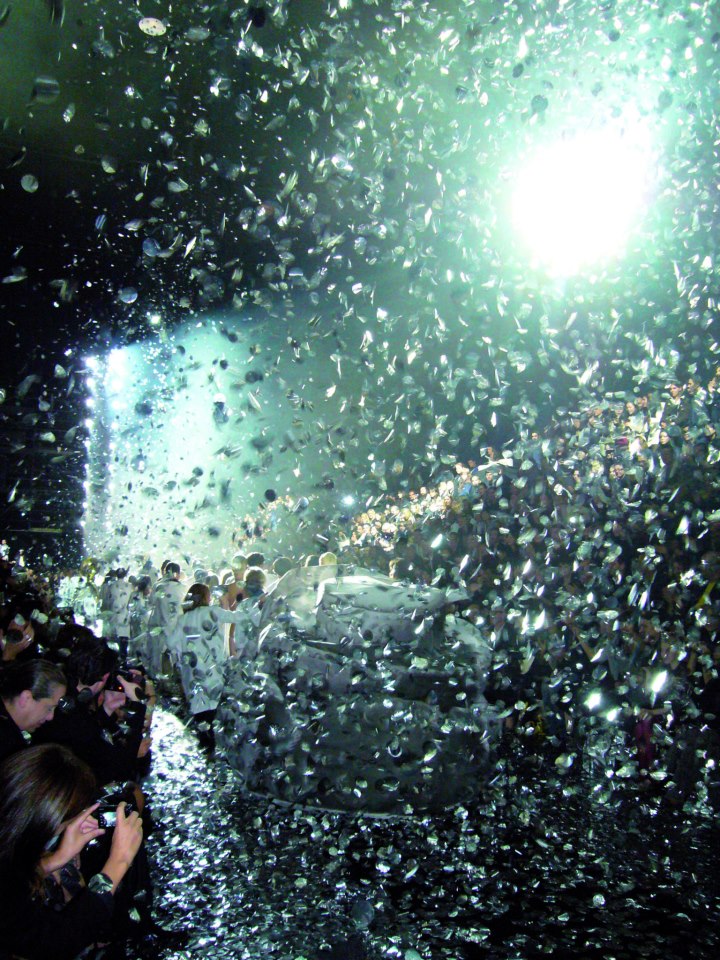
Maison Martin Margiela 2009 S/S
It is reported that conflicts have led to this change. Both current and former employees mentioned that Martin Margiela’s exit was due to the dissatisfaction with Diesel’s commercial direction. For instance, in Fall/Winter 2009, the group introduced tailoring to the brand. A few staff said this was also one of the reasons Margiela wanted to leave.
“Absence is all you need to understand him and to understand the Margiela spirit.”– Linda Loppa
The story of a widely acclaimed designer leaving the brand that had been sold to a big group because of discontent with the operating strategy is commonplace in the fashion world; Helmut Lang and Jil Sander are well-known examples. In the case of MMM, the staff said Margiela’s desire to enjoy life and stay away from the superficial glamour of the fashion industry is also a factor.
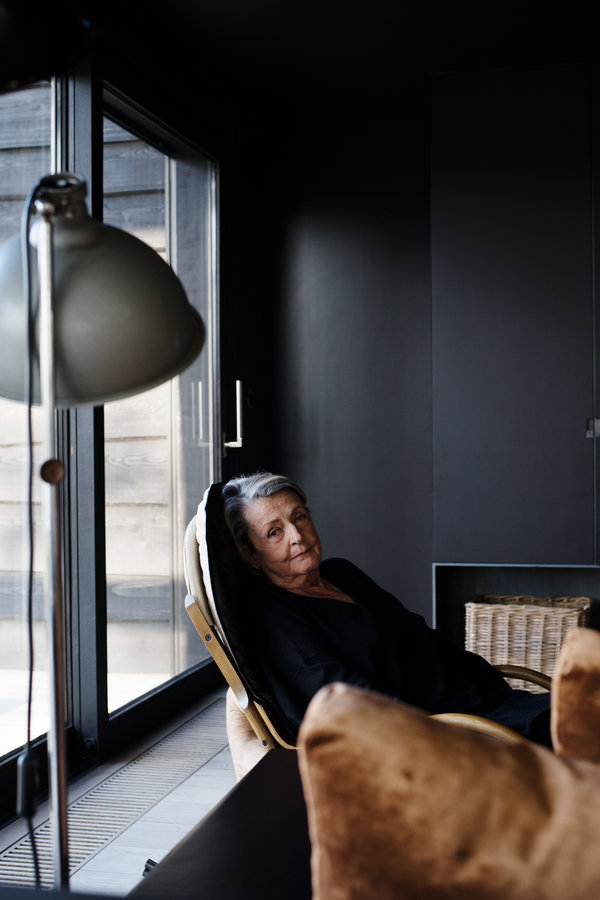
Jenny Meriens via T-Magazine
Patrick Scallon told The New York Times, Martin Margiela believes consumers should respond to the garments and concepts rather than following the media hype, though “There is a lot of revisionist history now in that people think of what Martin Margiela did as a marketing ploy,” Mr. Scallon said. “It was not just for the sake of being provocative. A designer is not an artist in a gallery, not a sculptor with a chisel and stone in a garden. He is someone who has to work with a collaborative team. The downside is that it engendered these rumors that he doesn’t exist or doesn’t work.”
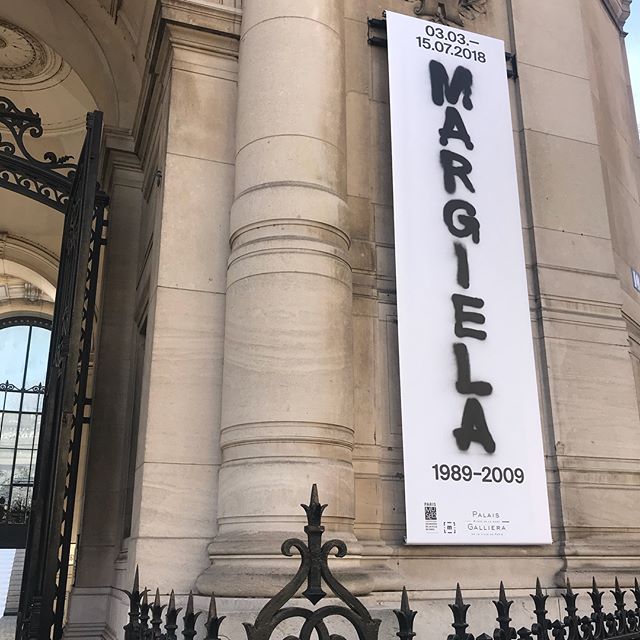
‘Designers forget clothes. They are just interested in images. But they forget clothes.’ — Martin Margiela(via the Cut)
In March 2018, Palais Galliera (aka Paris Fashion Museum) organised a retrospective devoted to Martin Margiela, Margiela / Galliera 1989-2009. Vogue Runway Chief Critic Sarah Mower said, “This exhibition, then, will in large part be read as Martin Margiela taking ownership of his legacy. It makes clear what was what, and why. That, it’s to be hoped, is what should inspire the next generation of viewers, as Margiela’s work and times were all done before they were born. Good fashion exhibitions always send out fresh ripples. Yet, what the children of the financial crash and today’s politics should notice most are not the exploitable styles, but the DIY, on-the-cheap, thinking-about-resources intelligence at the core of what Martin Margiela did. It was a way to describe a cool, anti-establishment elegance of an outsider gang which made something mind-bendingly eloquent and creative out of practically nothing.” Although he is a recluse, speech is silver, silence is golden, he shines brighter than ever.
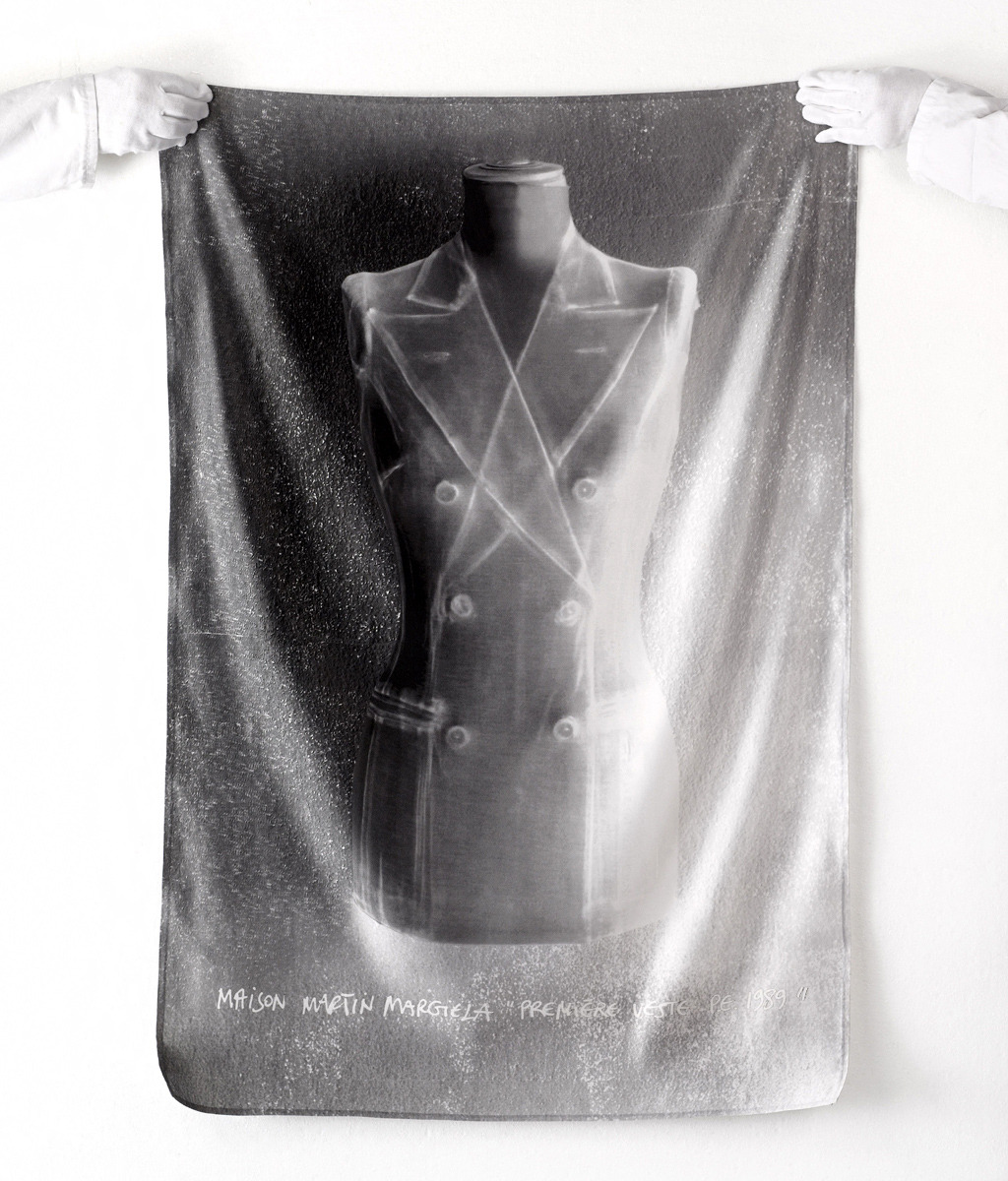
Once / After:
- It is said Martin paints, that he sometimes plays curator. “In his own way, he is present all around the world,” former makeup artist for the brand and Martin’s good friend, Inge Grognard told Mastermind Magazine, In Paris, he sometimes lunches with Jean Paul Gaultier. “People will go up to talk to JPG, and no one realizes who is sitting opposite them.”
- Martin never wears designers’ clothes, but only clothes from the flea markets.
- About model’s face mask, MMM’s official response through the interview with AnOther magazine’s chief editor Susannah Frankel in 2001, “There is no element of opposing to the profession or the models, we only prefer to focus on the garments and not just putting them onto the models and then let the press write about it.”
- New York’s Bloomingdale and Los Angeles’ Repongi were the first to introduce MMM to the US.
- At the Forces of Fashion organised by Vogue, John Galliano told everyone that Margiela loves 17th-century literature, 18th-century costume and kitsch.
- The world’s first flagship of Maison Martin Margiela opened in Ebisu, Tokyo, in September, 2000. It’s once relocated in 2006. Some furniture used at the first shop were placed at a corner of the shop for remembrance. But now it’s moved.
- There’s a list of muses as the aspiration for Margiela — Janes Birkin, Geraldine Chaplin, Diana Vreeland, and Loulou de la Falaise etc. But he is not referring to a type, but their aura, gestures and tones. He thinks that people notice them in a crowd and hence notice what they wear. He admits that he’s infatuated by women with prominent nose feature.

